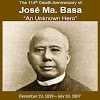Last Holy Week, the peak season for mountaineering, another forest fire occurred in Mount Kanla-on Natural Park that basically wiped out the vegetation at the Margaha Valley, a dormant crater that is found just below the highest peak of the volcano.
As reported by MKNP Protected Area Superintendent Cecil Cañada, the affected site covered about 29 hectares and mostly grassland. He said two minor boys were responsible for the fire by carelessly cooking their food while camping at the Margaha Valley. When the fire started to spread, the two were found running away from the valley, but the park rangers were able to intercept them at the lower slope of the protected area, Cañada added.
The boys were unregistered trekkers, and they probably used a trail that was not manned by park rangers, who were doing the regular monitoring during the Holy Week in MKNP.
Grass and forest fires are actually not new in MKNP, because some its sites are really fire hazard due to presence of grasslands, particularly at the side of La Castellana and Murcia towns in Negros Occidental, and Canlaon City in Negros Oriental. In the past, most of the fires usually occurred due to kaingin, hunting, and honeybee gathering, or merely accidental. Hunters set the fire in grasslands to attract the deer once fresh grasses started to sprout again. This was the case of one incident we encountered when I was still the park superintendent of the MKNP.
The recent burning incident, however, was trekking related, and that was very unfortunate, since the culprits are minors, and I am not sure if they are aware of trekking guidelines in MKNP.
The MKNP mountaineering guideline was crafted purposely to ensure that untoward incidents should be avoided, while at the same time, providing visitors the opportunity to explore and appreciate the beauty of Mount Kanla-on in ways that will not also negatively affect the biological diversity of the protected area. In fact, MKNP, as far as I know, was the first mountain destination in the Philippines that has introduced the mountaineering guidelines, which include prohibition in using fuel wood for camping and cooking. Only camping stoves are allowed and should only be used in designated campsites.
During the Holy Week, Cañada mobilized his personnel and some volunteers to conduct monitoring on trekking in different areas. However, given the large area of the MKNP with numerous entry points, some trekkers sneaked out from the designated trails leading to the summit. Based on experienced, some trekkers, mostly residents of the peripheral areas of the MKNP, avoided the entrance stations to get away from paying the required trekking fees, hiring of official guides, and other requirements.
This is precisely the reason why during my time, we requested military forces to assist us in monitoring the trekkers at the summit of the protected area during the Holy Week.
Although the natural regeneration of areas in higher elevations of the MKNP, like in Margaha Valley, is quite very fast because of its cool temperature and moisture, I hope it would be the last to happen, especially so that the floral composition of the protected area has never been studied very well. In Margaha Valley alone, there are already two endemic species of grasses, the reason why when we developed the first mountaineering guideline for MKNP, we did not designate the area as camping site.
There are numerous flowering plants in Margaha Valley and the stunted trees surrounding it are not only beautiful and pleasant to see, but are also diverse and serve as habitats to other plant organisms, such as vines and orchids. It is therefore very important that the entire MKNP should be fully protected since the various life forms present in the area are not yet fully known.*









0 Comments